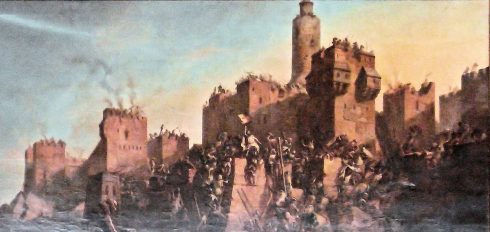Saint Aleth of Dijon
Mother of Saint Bernard of Clairvaux, she belonged to the highest nobility of Burgundy. Her husband, Tescelin, was lord of Fontaines.
Saint Bernard of Clairvaux was the third of her seven children. At the age of nine years, Bernard was sent to a much renowned school at Chatillon-sur-Seine, kept by the secular canons of Saint-Vorles. He had a special devotion to the Blessed Virgin, and there is no one who speaks more sublimely of the Queen of Heaven. Bernard was scarcely nineteen years of age when his mother died.
In the year 1128, Bernard assisted at the Council of Troyes, which had been convoked by Pope Honorius II. The bishops made Bernard secretary of the council, and charged him with drawing up the synodal statutes. It was at this council that Bernard traced the outlines of the Rule of the Knights Templars who soon became the ideal of the French nobility. Bernard praises it in his “De Laudibus Novae Militiae”.
The Knights Templar
The life of the Templars was full of contrasts. A contemporary describes the Templars as “in turn lions of war and lambs at the hearth; rough knights on the battlefield, pious monks in the chapel; formidable to the enemies of Christ, gentleness itself towards His friends.” (Jacques de Vitry). Having renounced all the pleasures of life, they faced death with a proud indifference; they were the first to attack, the last to retreat, always docile to the voice of their leader, the discipline of the monk being added to the discipline of the soldier. As an army they were never very numerous. A contemporary tells us that there were 400 knights in Jerusalem at the zenith of their prosperity; he does not give the number of serjeants, who were more numerous. But it was a picked body of men who, by their noble example, inspirited the remainder of the Christian forces. They were thus the terror of the Mohammedans.
Were they defeated, it was upon them that the victor vented his fury, the more so as they were forbidden to offer a ransom. When taken prisoners, they scornfully refused the freedom offered them on condition of apostasy. At the siege of Safed (1264), at which ninety Templars met death, eighty others were taken prisoners, and, refusing to deny Christ, died martyrs to the Faith. This fidelity cost them dear. It has been computed that in less than two centuries almost 20,000 Templars, knights and serjeants, perished in war.
(cfr. Catholic Encyclopedia)









